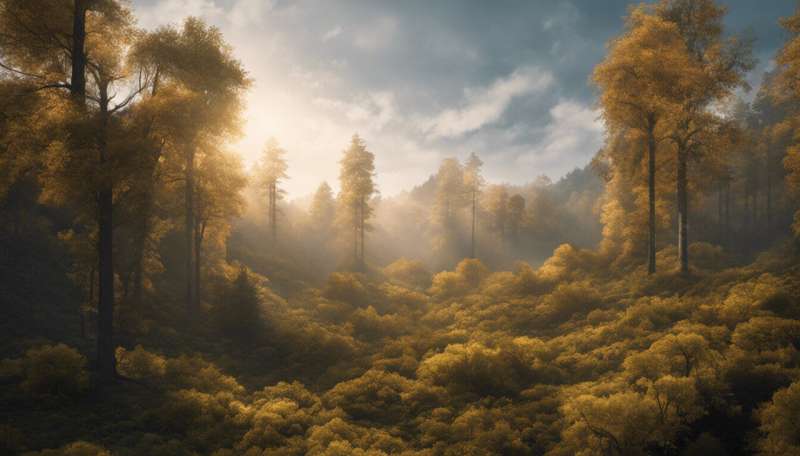Credit: AI-generated image (disclaimer)
A team from the National Physical Laboratory (NPL) has produced a 3D reconstruction of Wytham Woods using data collected on a recent field trip, as part of a project to improve forest monitoring techniques.
Knowledge of forests is essential to our understanding and mitigation of climate change. Covering about 30% of global land area, forests play a significant role in the delivery of ecosystem services including climate regulation, carbon storage, biodiversity, prevention of soil erosion and flood mitigation.
Forest monitoring programmes, which can assess the impact of natural and anthropogenic processes on forest resources, are consequently of high importance to decision-makers such as governments and international organisations. However, few Earth Observation systems have reliable and fully traceable information concerning the quality of the data they provide.
NPL's work within the European Metrology Research Programme project, MetEOC2, aims to provide traceability for terrestrial and satellite measurements of key biophysical climate variables, including forest cover, to provide quality-assured data which decision-makers can act on with confidence.
Using NPL's expertise in traditional field surveys, as well as novel imaging techniques, the TREES Group at NPL is developing improved techniques for the characterisation of field sites, an important tool for monitoring vegetation dynamics. Over the summer, a team of researchers from NPL, University College London and the University of Oxford sampled six hectares of forest with a range of optical devices to assess forest structure, canopy area and the spectral properties of leaves, bark and undergrowth.
The team collected LiDAR measurements of the position and reflectance of their surroundings, then used this data in computational tree models to produce a 3D reconstruction of the site in Wytham Woods in Oxfordshire. The ultimate aim is to produce a complete 3D model of the forest for use in 3D radiative transfer models, which will validate other sensors.
More information: Find out more about the TREES Group at NPL: www.npl.co.uk/optical-radiatio … ange/research/trees/
Provided by National Physical Laboratory























